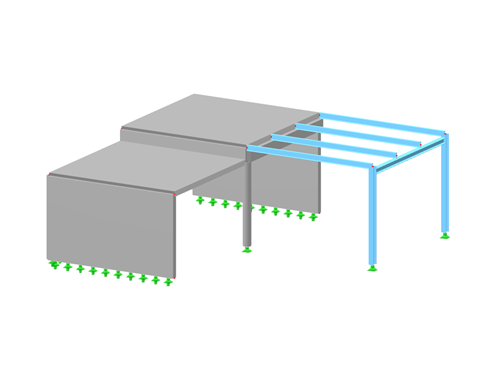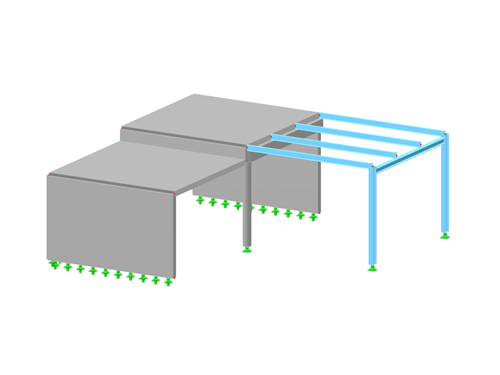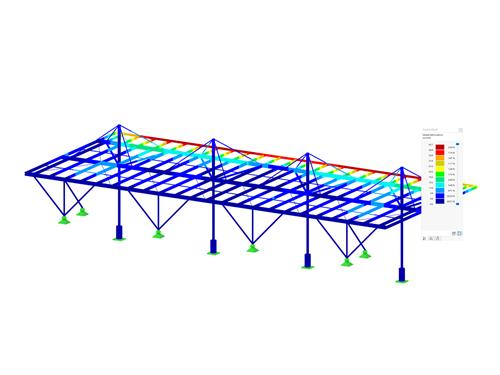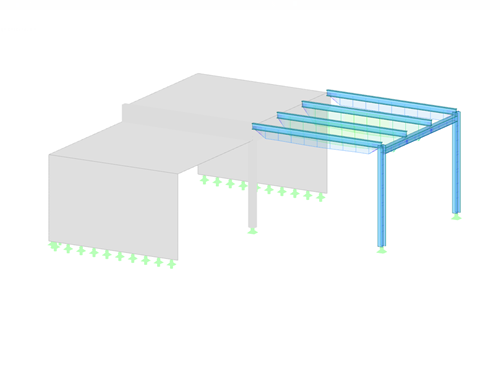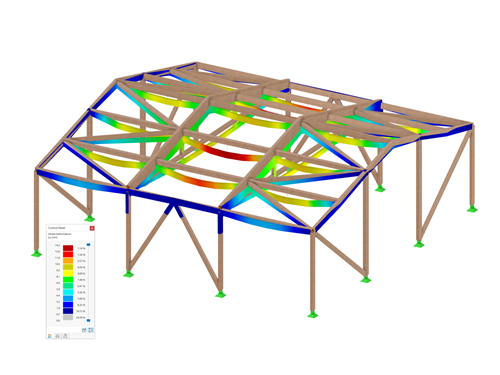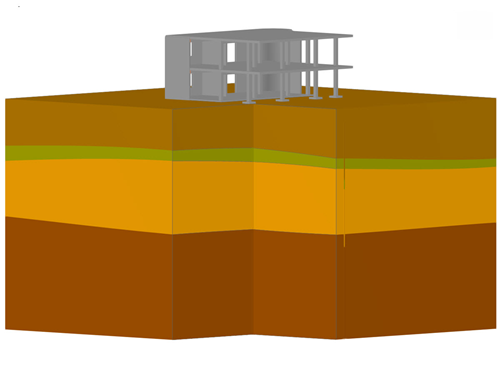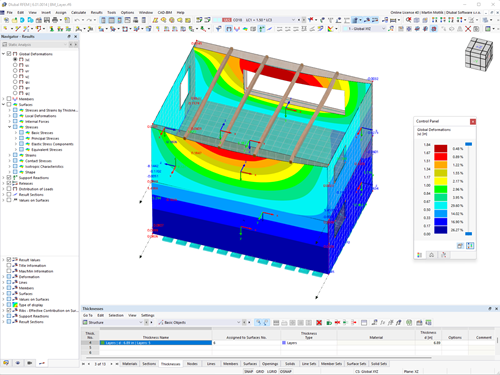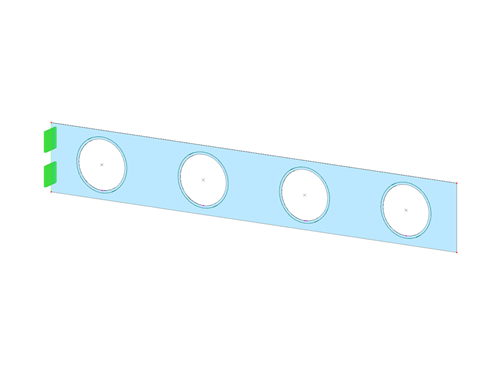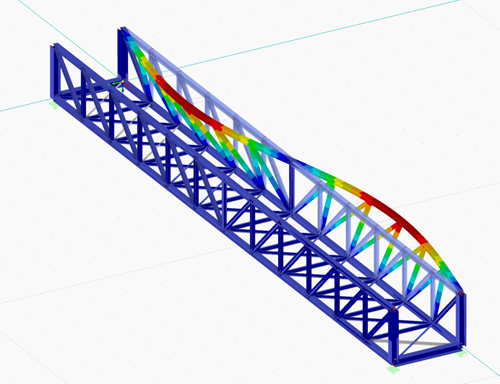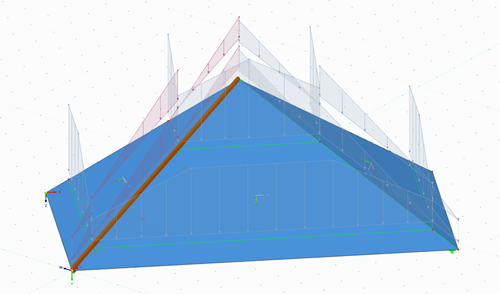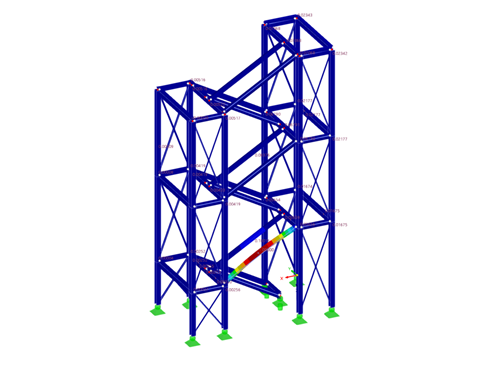In this tutorial, we would like to inform you about the essential features of the RFEM program. The first part shows how to create the structural objects and loads, combine the loads, perform a structural analysis, check the results, and prepare the data for printing. Eurocodes with the CEN settings are used as standards.
In this tutorial, we would like to inform you about the essential features of the RFEM program. The first part shows how to create the structural objects and loads, combine the loads, perform a structural analysis, check the results, and prepare the data for printing. The US codes are used as standards.
The Steel Design add-on allows you to design steel members according to various design standards. Cross-section resistance checks, stability analyses, and serviceability limit state design checks can also be performed. The input and result evaluation are completely integrated in the user interface of the structural FEA software RFEM and the frame & truss analysis software RSTAB.
This manual describes the Steel Design add-on for the RFEM 6 and RSTAB 9 programs.
In this tutorial, we would like to inform you about the essential features of the RFEM program. In the first part, a model was defined and a structural analysis was carried out. The concrete design was performed in the second part. Finally, the third part deals with the design of the steel members according to EN 1993‑1‑1 with the CEN settings.
In this tutorial, we would like to inform you about the essential features of the RFEM program. In the first part, a model was defined and a structural analysis was carried out. After performing the concrete design in the second part, the third part now deals with the design of steel members. AISC 360-22 is used as a standard.
The Timber Design add-on allows you to design timber members and surfaces according to various design standards. Cross-section resistance checks, stability analyses, and serviceability limit state design checks can also be performed. The input and result evaluation are completely integrated in the user interface of the structural FEA software RFEM and the frame & truss analysis software RSTAB.
This manual describes the Timber Design add-on for the RFEM 6 and RSTAB 9 programs.
The Aluminum Design add-on allows you to design aluminum members according to various design standards. It is possible to perform cross-section resistance checks, stability analyses, and serviceability limit state design checks. The input and result evaluation are completely integrated in the user interface of the structural FEA software RFEM and the frame & truss analysis software RSTAB.
This manual describes the Aluminum Design add-on for the RFEM 6 and RSTAB 9 programs.
The Torsional Warping (7 DOF) add-on allows you to consider the cross-section warping as an additional degree of freedom for a global calculation of members in RFEM and RSTAB. The input and result evaluation are completely integrated in the user interface of the structural FEA software RFEM and the frame & truss analysis software RSTAB.
This manual describes the Torsional Warping (7 DOF) add-on for the programs RFEM 6 and RSTAB 9.
The Geotechnical Analysis add-on allows for a finite element analysis of soil solids with the suitable material laws in RFEM 6. By integrating Geotechnical Analysis into the FEA software, the soil-structure interaction can be represented computationally completely in the overall model.
With the Geotechnical Analysis, it is possible to determine the stresses and deformations of a soil solid. The input and result evaluation are integrated in the user interface of the RFEM 6 program.
This manual describes the Geotechnical Analysis add-on for the RFEM 6 program.
The Multilayer Surfaces add-on allows you to define the layer structure of any material model. Another possible thickness type is the beam panel as a composite of members and surfaces. In the case of orthotropic materials, the individual layers can be rotated by an angle β, and thus it is possible to consider different stiffnesses by direction. The Multilayer Surfaces add-on is completely integrated in the user interface of the FEA program RFEM.
This manual describes the Multilayer Surfaces add-on for the RFEM 6 program.
The Optimization & Costs/CO2 Emission Estimation add-on consists of two parts: On one hand, you can use it to determine an optimal parameter layout for parameterized models, based on the user-defined optimization criteria. For this purpose, the artificial intelligence technology (AI) of particle swarm optimization (PSO) is used. On the other hand, you have the option to estimate the costs and CO2 emissions of a model by specifying the unit costs and emissions for the materials used in the model.
This manual describes the features of the add-on for the programs RFEM 6 and RSTAB 9. The explanations refer to RFEM, but also apply to RSTAB.
This manual describes the topics of the webinar "Steel Structure Analysis in RFEM 6 and RSTAB 9". First, it shows how to model a truss bridge. Using this example, it describes how to apply loads and load combinations, and then a stability analysis as well as design according to Eurocode 3 using the Steel Design add-on is carried out.
In the manual for the Steel Design add-on, you can find detailed explanations of all the add-on options.
The manual describes all steps in RSTAB 9. However, all explanations also apply to RFEM 6.
This manual describes the topics of the webinar Modeling and Design of Timber Structures in RFEM 6.
First, it shows how to model a hip rafter in RFEM 6 and how to apply loads, as well as how to perform timber design according to Eurocode 5. The creation of a printout report and the use of parameters and user-defined scripts are then discussed.
In the manual for the Timber Design add-on, you can find detailed explanations of all the add-on options.
This manual describes the topics of the webinar "Stability and Warping Torsion Analyses in RFEM 6 and RSTAB 9".
In the webinar, a stability analysis of a staircase tower is carried out. It explains when and why a warping torsion analysis with 7 degrees of freedom is necessary. Furthermore, special attention is given to how you can create and combine local imperfections in RFEM 6 and RSTAB 9.
In the manual, all steps are carried out in RFEM 6, but the same also applies to RSTAB 9.
